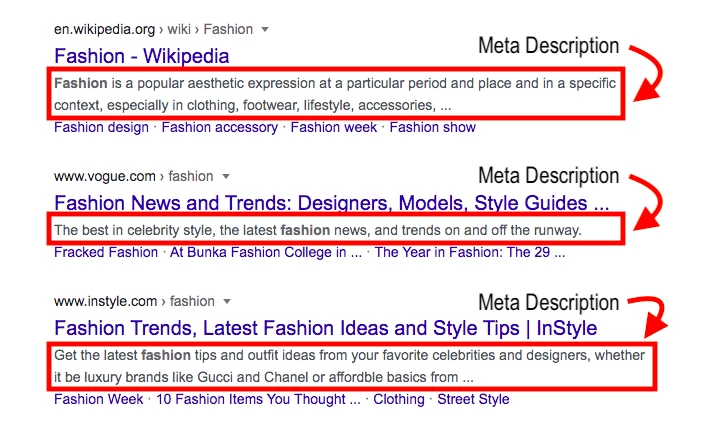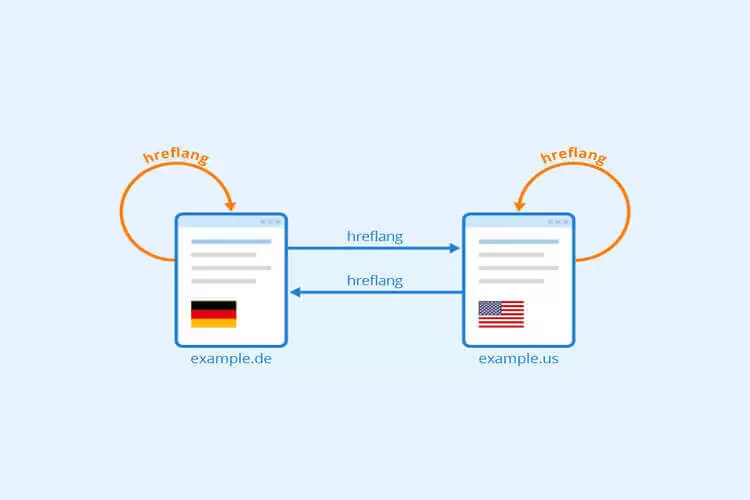Last Updated on 3 months by Gülenber Han
The answer to the question of what are meta tags is important for SEO. In the HTML of the document, meta tags give information about the webpage. This information is known as ‘metadata’, and while the meta tag in HTML is not visible on the page itself, search engines and web crawlers can read it. Metadata from SEO meta tags is used by search engines like Google to interpret more information about a webpage. SEO meta tags can use this information to rank pages, display snippets in search results, and even omit meta tags in some cases.
Meta Tag Definition: What Are Meta Tags?
The question of what are meta tags can be answered like this: The term ‘meta’ refers to ‘metadata’, which is information about information. SEO meta tags are used to convey information about a webpage and have a direct impact on how search engines evaluate it. The majority of meta tag elements are for search engines, such as Googlebot and other site crawlers.
Meta tag in HTML is an invisible tag that gives search engines and website visitors information about your page. They make it easier for search engines to figure out what your content is about. So, this is why they’re so important for SEO. SEO meta tags must be coded in your CMS since they are inserted in the <head> section of an HTML document. Depending on the platform that supports your website, this might be easier or more difficult: an ‘out of the box’ solution like WordPress will have a specific area for meta tags.
Are Meta Tags Significant for SEO?
You should know whether they are important for SEO as well as the answer to the question of what are meta tags. SEO meta tags are crucial because they influence how your site shows in search engine results pages (SERPs) and how many people will click through to your site. As a consequence, they’ll have an impact on your traffic and engagement rates. Also, they will affect your SEO and rankings. Although certain tags may not directly affect rankings, SEO meta tags do have an influence on how your site looks in the digital environment. They might also play a role in non-traditional search results such as Knowledge Graph, Google picture search, voice, and others.
On a SERP, SEO meta tags are the first impression that someone receives of your website. A compelling meta description will entice people to visit your website. SEO meta tags guarantee that search engines understand what your content is about, allowing them to display your website in the most relevant results.
Consider this scenario: You’re exploring a store shelf and come across a product with an old and ugly label. It omits crucial information, such as the product’s composition. Then you see a label on another product that is bright and appealing, complete with a list of visible ingredients. You’ll purchase the item with the finest label. It’s the same with meta descriptions: if they’re awful, no one will click on your content. Because meta descriptions are frequently the deciding factor in which results consumers click on, it’s critical to include high-quality meta tags on your web pages. If you found this post using a search engine, there’s a good probability you clicked on it because the meta tags were effective. However, in order to be successful in this regard, it would be more beneficial to work with an SEO agency.
Do Meta Tags Help SEO?
Search engines and website users who come across your site in the SERP can learn more about it thanks to meta tags. SEO meta tags may be tweaked to highlight the most crucial aspects of your content and help your site stand out in search results.
Search engines are increasingly valuing a positive user experience, which includes ensuring that your site responds to a user’s query as effectively as possible. Meta tag in HTML assists with this by ensuring that the information searchers require about your site is provided succinctly and helpfully up front. Some SEO meta tags deal with page structure and make your site simple to navigate, while others inform search engines which portions of your page are vital and which should be ignored. There are many distinct sorts of meta tags, each of which has a particular purpose, and not all of them are SEO-relevant. You can work with an SEO firm to get more information about these tags.
What are HTML meta tags?
Now that you have learned the answer to the question of what are meta tags, you can learn what HTML meta tags are. Meta tag in HTML is added to a document’s HTML code to assist search engines in deciphering more information about a page. It is also employed in the ranking of content and pages. In the search results, title tags and meta descriptions are displayed. These are the meta tags that should appear on every page, regardless of the content. Meta tags in HTML are important to businesses in different ways depending on the type of content being created and how you want the information to be indexed. Given that SEO meta tags contain code, it is typically suggested that you do not include tags that you do not require, but that you do not ignore any tags that are critical to your objectives.
The length of your meta description and title tags, for example, will have an influence on how relevant your site looks in the SERP. Users will see your site title and a summary of your content — the meta description — when they obtain their list of results. Users examine this data to determine whether or not they should click on a certain result. By organically including your core keyword in these parts, you may increase your perceived relevancy on the SERP and hence your click-through rate. When people have numerous sites open, your SEO title tag also displays in the tab for your web page, which might motivate them to return to your content and engage more with your website.
Other tags, such as the Robots and hreflang tags, are useful when you have specific content limitations, such as the stuff you don’t want to be indexed or content produced expressly for individuals in specific countries. By completing these tags, you can guarantee that your material is properly indexed and shown to a suitable audience. These SEO meta tags are necessary because content appearing in the wrong language or country, or duplicate content penalties arising as a result of content you did not want to be indexed, may harm your rankings and reputation.
Title Tag

The title meta tag in HTML informs search engines about the title you wish to appear in SERPs. It might be a condensed version of the headline on the website. Search engine crawlers will find it simpler to scan, categorize, and rank your content if you include a title tag in your web pages. Because it is accessible to search engines and internet users, the title tag is one of the most significant meta tags. It’s your first chance to pique a searcher’s interest. It might be the piece of information that persuades someone to visit your website.
Meta Description

For search engine crawlers and internet users, a meta description describes the content of a webpage. On the search engine results page, it shows beneath the title tag. Despite the fact that meta descriptions aren’t part of Google’s ranking algorithm, they’re nonetheless included as snippets in Google search results to improve a searcher’s accessibility to the results. So, instead of using meta descriptions as a ranking component, consider them as a strategy to boost your click-through rates (CTRs). Make sure your homepage, internal pages, and blog articles have innovative descriptions that include target keywords.
Meta Robots Attribute
Additional variables or parameters provided within an HTML element are known as robots SEO meta tags. The robot’s meta tag tells search engines if you want them to crawl or index certain areas of your site. You can put them in the content attribute separately or simultaneously (separated by a comma). By default, search bots and web crawlers index all of the pages and links you generate on your website. The following are some examples of common parameters:
- Index: This notifies web spiders that the page should be indexed. People who use search engines can view a page that has been indexed. This is the default if you don’t make any changes to the code.
- Noindex: This tells search engines not to include the page in their index, thus it won’t show up in the search results.
- Follow: This instructs search engines to follow links you’ve put inside your web pages, directing the reader to more pages. If you don’t add any arguments to the source code, this is likewise the default.
- Nofollow: This tells search engine bots not to crawl the page’s links and that you don’t recommend them. Some websites utilize it as a safety net to alert search engines that they aren’t using spammy link-building practices.
- Noarchive: This tells search engines that the page should not be cached or shown.
Hreflang tags

Hreflang specifies a webpage’s language and geographic targeting. You may use the hreflang element to alert search engines like Google that you have various copies of the same page in different languages. This meta tag in html enables them to provide their users with the right version. If you’ve invested effort in translating your material into different languages, you’ll want search engines to display to consumers the version that’s most relevant for them. Hreflang SEO meta tags are used by both Google and Yandex to aid with this.
Canonical tags

If you have almost similar pages on your site, you may need to tell search engines which one to prioritize. If you employ a canonical meta tag in HTML, you may accomplish both of these things without risking a duplicate content penalty. You are instructing the crawlers as to which URL counts as the ‘primary’ one, rather than confusing Google and losing your rating in the SERPs. This emphasizes the correct URL. Also, this prevents others from detracting from your SEO.
Open graph tags

Open Graph is an internet protocol designed by Facebook to standardize the usage of information inside a webpage to reflect the page’s content. You can include information as basic as the title of a website or as precise as the length of a video. Each of these components fits together to produce a depiction of a single internet page. On the internet, most content is generated with one objective in mind: to be shared with others. If you’re just sending it to one buddy, this may not be a big deal, but if you want to share it or have it shared on any social network or app that uses rich previews, you’ll want that preview to be as good as possible. This will encourage readers to look at your material and, eventually, to click through to it.
Content type
The Content-Type is used to specify the resource’s media type. The media type is a string that is transmitted with the file and indicates the file’s format. The media type for an image file, for example, will be image/png or image/jpg, and so on. This meta tag in HTML is required to specify the page’s character set and should be included on every page. If you leave this out, your page’s rendering in the browser may suffer.










